- What is seed stratification?
- Why is seed stratification important?
- 1. Breaking seed dormancy
- 2. Enhancing germination success
- 3. Achieving uniform and synchronized germination
- 4. Expanding plant range and adaptation
- Methods of seed stratification
- Cold/moist stratification
- Importance
- Methods
- Tips
- Warm/moist stratification
- Importance
- Methods
- Tips
- Effects of scarification on seeds
- What is seed scarification?
- Importance of seed scarification:
- Methods of seed scarification:
- Tips for seed scarification:
- Why is seed scarification important?
- Methods of seed scarification
- Physical scarification
- Questions and Answers:
- Why is stratification and scarification important for seeds?
- What are some methods of stratifying seeds?
- What is scarification and why is it done?
- What are some tips for stratifying and scarifying seeds?
- Can all seeds be stratified and scarified?
- How long does stratification typically take?
- What can I do if I don’t have a refrigerator for cold stratification?
- Videos: Seeds and Germination Explained
Introduction:
Stratification and scarification are two common techniques used by gardeners and horticulturists to improve seed germination rates and increase their chances of successful growth. These methods are particularly important for seeds that have hard seed coats or require specific environmental conditions to break dormancy and begin sprouting.
Importance:
Stratification and scarification play a crucial role in mimicking the natural conditions that seeds would experience in their native habitat. In the wild, seeds are often exposed to fluctuating temperatures, moist and dry periods, or even physical disturbances like animal digestive systems or wildfires. By replicating these conditions, gardeners are able to improve the chances of successful germination and ultimately contribute to the overall health and diversity of their plant populations.
Methods:
Stratification involves subjecting seeds to a cold, moist environment for a period of time, usually weeks or even months, to break their dormancy. This process can be achieved by placing the seeds in a refrigerator or outdoors in a container filled with damp medium, such as vermiculite or peat moss. Scarification, on the other hand, is the process of weakening or nicking the hard seed coat to allow moisture and oxygen to penetrate more easily. This can be done through various methods, including rubbing the seeds on sandpaper, soaking them in hot water, or even using a small knife to make small cuts on the seed coat.
Tips:
When stratifying or scarifying seeds, it is important to research the specific requirements of the plant species you are working with. Not all seeds require these treatments, and some may have different optimal conditions. Additionally, ensure that the seeds you are using are viable and healthy before subjecting them to these processes. It is also important to monitor the seeds during stratification or scarification and check for any signs of mold or decay. Finally, remember to label and keep track of each batch of seeds to avoid mix-ups or confusion during the sowing and growing process.
Conclusion:
Stratification and scarification are valuable techniques in the gardener’s toolbox for improving seed germination rates and increasing the chances of successful plant growth. By mimicking natural conditions or weakening seed coatings, gardeners can create optimal environments and break seed dormancy, contributing to the overall success and diversity of their garden.
What is seed stratification?
Seed stratification is a process that mimics the natural conditions necessary for some seeds to germinate. It involves subjecting the seeds to specific temperature and moisture conditions to break their dormancy and trigger germination.
Many plant species have evolved mechanisms to prevent their seeds from germinating immediately after they are shed. This dormancy is an adaptation that allows the seeds to survive unfavorable conditions such as extreme cold or drought. However, in order to successfully grow these seeds, it is necessary to break this dormancy and provide the appropriate conditions for germination.
Seed stratification is particularly important for species that are native to temperate climates, as they often require a period of cold temperature to break dormancy. This process is known as cold stratification, and it helps to synchronize the germination of seeds with the arrival of favorable conditions in the spring.
There are different methods of seed stratification depending on the species and its specific requirements. The most common method involves placing the seeds in a moist, cool environment for a certain period of time. This can be done by placing the seeds in a refrigerator or by using a process called moist stratification, where the seeds are placed in a moist medium such as peat moss or vermiculite.
By practicing seed stratification, gardeners and horticulturists can effectively germinate a wider range of plant species and increase their success rate. It is a valuable technique for growing plants that would otherwise be difficult to propagate from seed, and it allows for the cultivation of a greater variety of plants in gardens and landscapes.
Why is seed stratification important?
Seed stratification is a process that involves simulating the natural conditions required for seeds to germinate. It is an important technique used in gardening and horticulture to enhance the germination success of certain plants. Stratification is particularly crucial for plants that have hard seed coats or require specific environmental conditions to break dormancy and initiate germination.
1. Breaking seed dormancy
One of the main reasons why seed stratification is important is that it helps break seed dormancy. Many plant species have mechanisms that prevent them from germinating immediately after they are dispersed from the parent plant. Dormancy is an adaptive trait that allows seeds to survive unfavorable conditions and maximize their chances of successful germination and growth. Stratification helps overcome this dormancy by providing the necessary conditions for the seeds to germinate.
2. Enhancing germination success
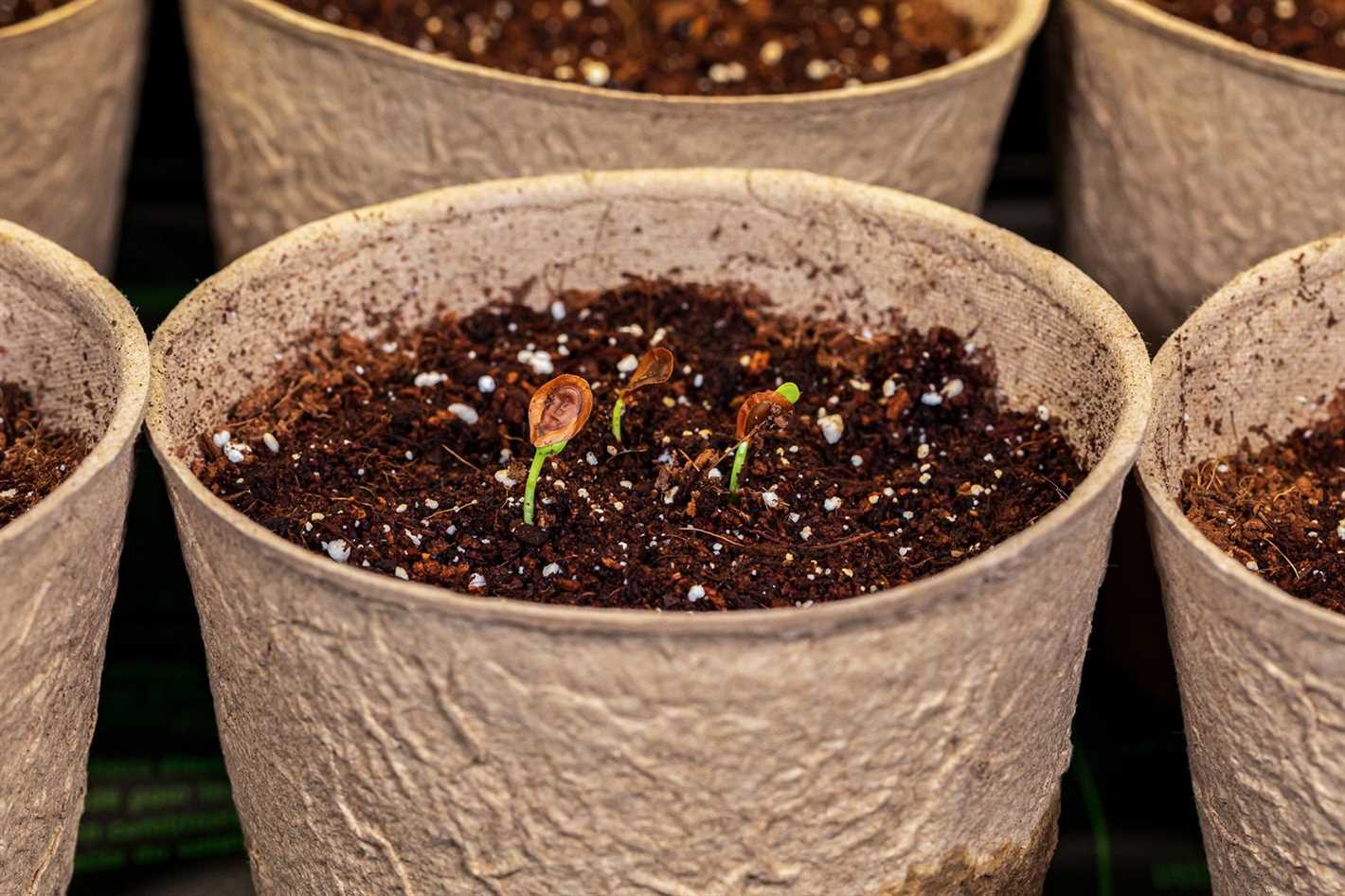
Stratification can significantly increase the germination success rate of seeds that have hard seed coats. These hard shells protect the seeds from various environmental factors, but they can also act as barriers that prevent water absorption and gas exchange essential for germination. By subjecting the seeds to stratification, the cold and moist conditions can help soften or scarify the seed coat, thereby allowing water and oxygen to penetrate and trigger germination.
3. Achieving uniform and synchronized germination
Another benefit of seed stratification is the ability to achieve more uniform and synchronized germination. When seeds are stratified together, they experience the same environmental conditions, which can help synchronize their germination timing. This is particularly important for large-scale seed propagation or when consistent growth and development are desired. Uniform germination and growth can simplify cultivation and ensure more predictable outcomes in terms of plant establishment and growth success.
4. Expanding plant range and adaptation
Seed stratification can also be used as a technique to expand the range and adaptation of certain plants. By subjecting seeds to stratification, it is possible to mimic the environmental conditions experienced in different geographic areas. This allows the selection and propagation of plants from different climatic zones, increasing the diversity and adaptability of plant populations. Stratification can be used to introduce and establish plant species in regions where they would not normally grow, contributing to biodiversity and ecological restoration efforts.
In conclusion, seed stratification is an important technique in gardening and horticulture that helps break seed dormancy, enhance germination success, achieve uniform and synchronized germination, and expand the range and adaptation of plants. By understanding and applying seed stratification methods, gardeners and horticulturists can improve the success and diversity of their plantings.
Methods of seed stratification
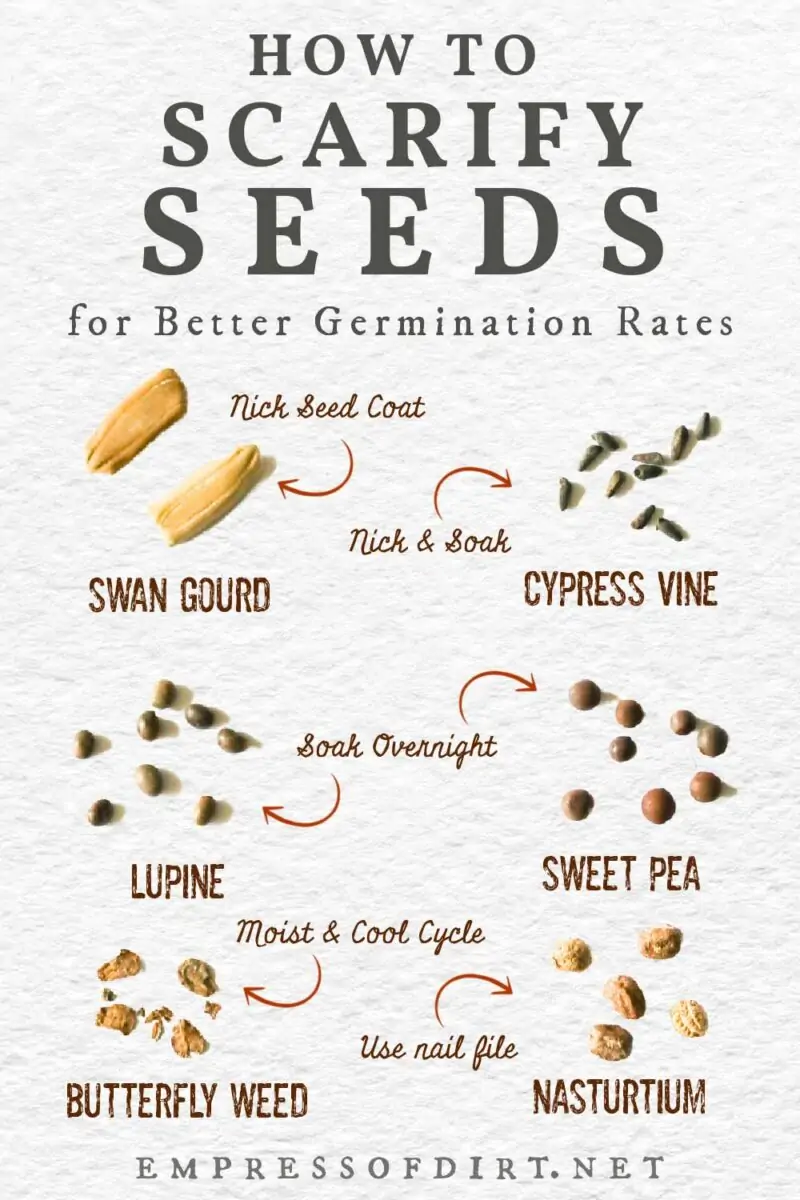
Seed stratification is a process that helps break the seed dormancy and promote germination. There are several methods of seed stratification that can be used depending on the type of seeds and their specific requirements. Some common methods include:
- Cold stratification: This method involves exposing the seeds to a period of cold temperatures, usually between 1°C and 10°C. This imitates the natural winter conditions that seeds experience, and helps to break their dormancy. Cold stratification can be achieved by placing the seeds in a refrigerator, buried in moist sand or vermiculite, or by sowing them outdoors during the winter months.
- Warm stratification: Some seeds require warm temperatures to break their dormancy. These seeds can be stratified by exposing them to temperatures between 20°C and 30°C for a specific period of time. This can be done by placing the seeds in a warm location, such as on top of a radiator or near a heat source.
- Light stratification: Certain seeds require exposure to light in order to germinate. Light stratification involves keeping the seeds in a location with bright, indirect light for a specific period of time. This can be achieved by placing the seeds on top of a seed tray filled with potting mix, and keeping them in a well-lit area.
- Chemical stratification: Some seeds have hard seed coats that need to be softened in order to promote germination. Chemical stratification involves treating the seeds with specific chemicals, such as sulfuric acid or hydrogen peroxide, to break down the seed coat and facilitate germination. This method should be used with caution, as it can be harmful if not done properly.
- Scarification: Scarification is a method of breaking the seed coat using mechanical means. This can be done by gently rubbing the seeds with sandpaper, nicking the seed coat with a knife, or soaking the seeds in hot water. Scarification helps to improve seed germination by allowing water and oxygen to penetrate the seed coat more easily.
It is important to note that not all seeds require stratification. Some seeds can be sown directly into the soil without any pre-treatment. It is also recommended to research the specific requirements of the seeds you are trying to stratify, as different species may have different stratification needs.
Cold/moist stratification
Cold/moist stratification is a seed treatment method used to break dormancy in seeds that require exposure to cold temperatures and moisture in order to germinate. This process simulates the natural conditions that seeds would experience during the winter months.
Importance
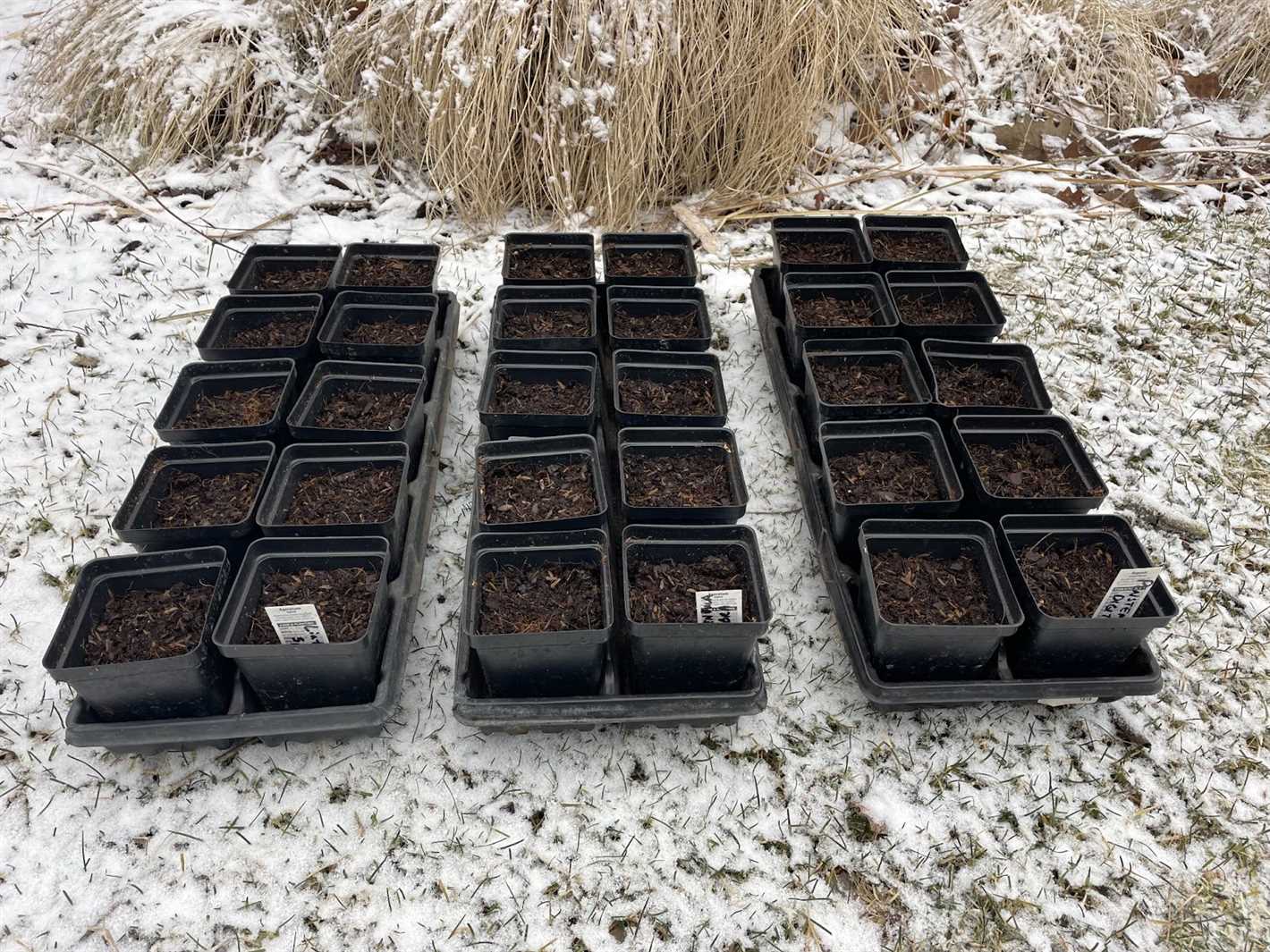
Cold/moist stratification is important for many plant species because it helps to ensure successful germination. Seeds that require this treatment may have an outer seed coat that is impermeable to water or may contain inhibitory substances that prevent germination. By subjecting these seeds to cold and moist conditions, their dormancy is broken and they become more receptive to germination.
Methods
There are several methods for cold/moist stratification, but they all involve imitating the natural processes that occur during winter. One common method is to place the seeds in a sealed container with a moist medium, such as vermiculite or peat moss, and then placing the container in a refrigerator or cold room for a specific period of time.
Another method involves placing the seeds in a damp paper towel, sealing it in a plastic bag, and then refrigerating it for the required duration. Some seeds may also require alternating periods of cold and warm temperatures, known as stratification cycles, to fully break their dormancy.
Tips
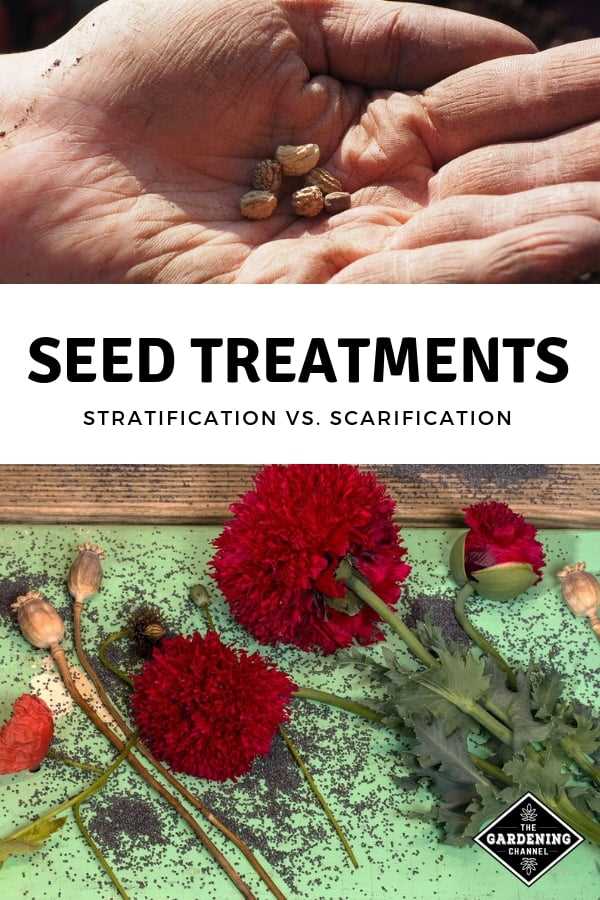
- Research the specific cold/moist stratification requirements for the seeds you are treating, as different plant species have different needs.
- Ensure that the medium used for stratification is consistently moist, but not soaking wet, as excessive moisture can lead to fungal growth and seed rot.
- Label and date your containers to keep track of the stratification period.
- Check on the seeds periodically during stratification to ensure they are still moist and to remove any moldy or damaged seeds.
- After the required stratification period, remove the seeds from the cold environment and plant them according to their specific germination requirements.
Warm/moist stratification
Warm/moist stratification is a technique used to promote germination in seeds that require warm and moist conditions to break dormancy. This method is commonly used for seeds from temperate climates, especially those that come from areas with mild winters.
Importance
Many seeds have evolved mechanisms to ensure they germinate under ideal conditions. Warm/moist stratification mimics the conditions that naturally occur in the environment, breaking the seed’s dormancy and allowing germination to occur.
Seeds that require warm/moist stratification may have a hard seed coat that prevents water absorption or inhibits embryo growth. By subjecting the seeds to warm and moist conditions, the seed coat softens or breaks down, allowing water to penetrate and initiate germination.
Methods
Warm/moist stratification involves the following steps:
- Gather the seeds that require warm/moist stratification.
- Place the seeds in a container (such as a plastic bag or seed tray) that retains moisture.
- Add a moist medium, such as vermiculite or peat moss, to the container. The medium should be damp but not soaking wet.
- Seal the container or cover it with a plastic wrap to retain moisture.
- Store the container in a warm location, such as a room with a consistent temperature between 65-85°F (18-29°C).
- Check the seeds regularly for signs of germination. It may take several weeks or even months for some seeds to germinate.
Tips
- Research the specific requirements of the seeds you are stratifying. Some seeds may require specific temperature ranges or lengths of stratification.
- Label the container with the date of initiation to keep track of the stratification period.
- Provide adequate ventilation to prevent mold or fungal growth.
- Monitor the moisture level in the container and adjust as necessary to prevent the seeds from drying out or becoming waterlogged.
- Some seeds may benefit from scarification (mechanical or chemical) before stratification to further enhance germination.
By using warm/moist stratification, gardeners can successfully germinate a wide range of seeds that require these specific conditions. This technique allows for the cultivation of plants that may not otherwise germinate, expanding the variety of species that can be grown in a garden or landscape.
Effects of scarification on seeds
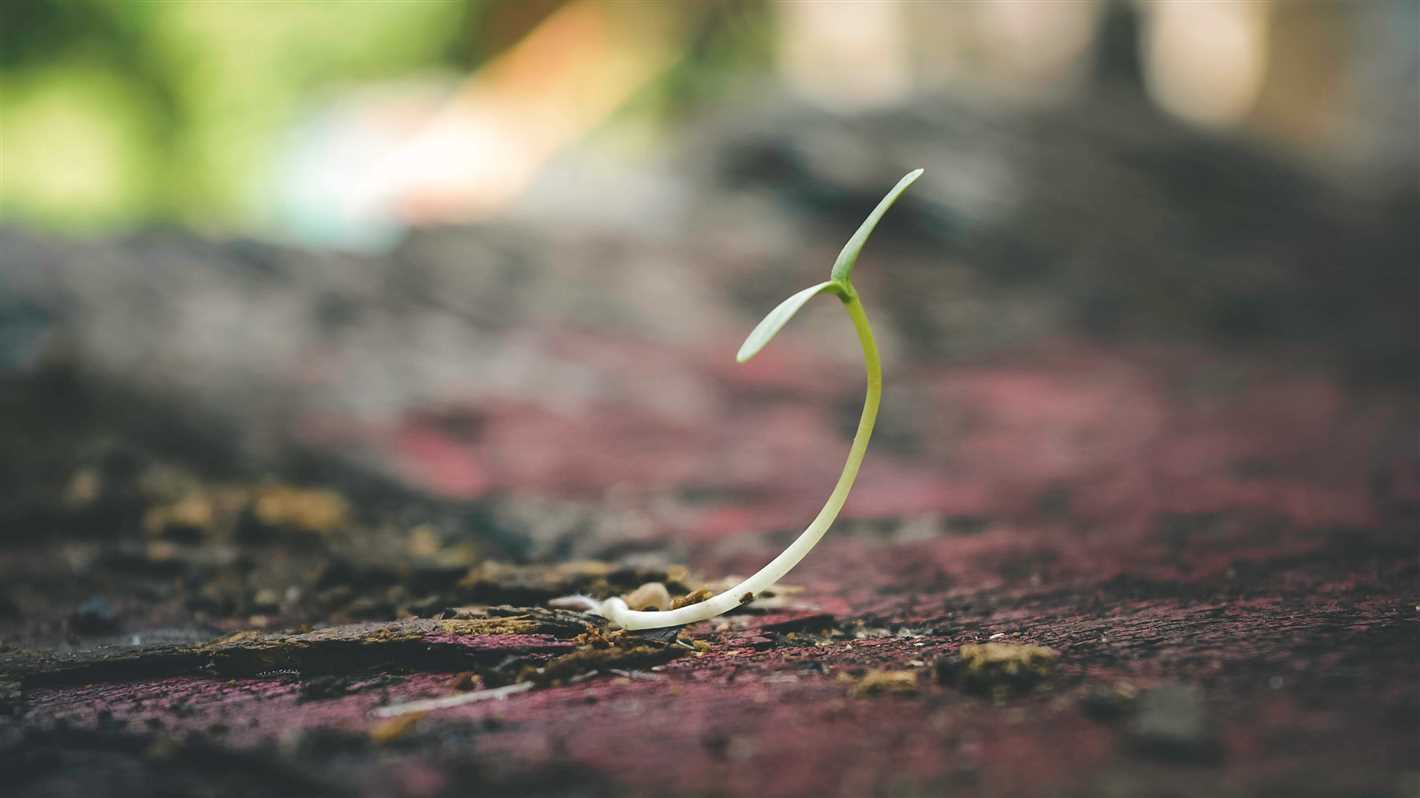
Scarification is the process of breaking or weakening the seed coat, which allows better water and oxygen penetration, thus facilitating germination. This technique is beneficial for seeds with hard or impermeable seed coats, such as those of some tree and shrub species.
There are several effects of scarification on seeds:
- Increase in water absorption: Scarification breaks the seed coat, allowing water to enter the seed more easily. This is crucial for seed germination, as water is required to trigger various biochemical processes that initiate growth.
- Enhanced gas exchange: Scarification helps in the exchange of gases, particularly oxygen. Oxygen is necessary for the metabolic processes involved in germination. By breaking the seed coat, scarification allows better access to oxygen, promoting seed germination.
- Stimulation of germination: Scarification stimulates the germination process by mimicking the natural seed aging or environmental conditions that seeds may experience in their natural habitat. This can include exposure to fire, freezing, or mechanical abrasion, all of which break the seed coat and promote germination.
- Overcoming dormancy: Some seeds have innate dormancy mechanisms that prevent them from germinating immediately after dispersal. Scarification can break this dormancy by physically damaging the seed coat or leaching out inhibitory chemicals, allowing the seed to germinate.
- Shorter germination time: Scarification can significantly reduce the time it takes for a seed to germinate. By breaking the seed coat and promoting water and oxygen absorption, scarified seeds can sprout faster compared to seeds without scarification.
It is important to note that scarification is not suitable for all types of seeds. Some seeds have delicate coats that may be damaged or killed by scarification methods. Therefore, it is essential to understand the specific requirements of each seed species before attempting scarification.
What is seed scarification?
Seed scarification is a process that breaks or softens the seed coat to improve germination. Many seeds have hard or impermeable coats that prevent water and oxygen from reaching the embryonic plant inside. Scarification helps to overcome these barriers and facilitate seed germination.
Scarification methods can vary depending on the species of the seed. The purpose of scarification is to simulate the natural processes that seeds undergo in the wild, such as exposure to harsh environmental conditions like freezing temperatures, fire, or the digestive systems of animals. These natural processes often break down the seed coat, allowing for germination to occur.
Importance of seed scarification:
Seed scarification is particularly important for seeds with hard or impermeable seed coats. Without scarification, these seeds may remain dormant for extended periods, reducing their ability to germinate and grow. Scarification is a way to speed up and improve the germination process, increasing the chances of successful seedling establishment.
Scarification is particularly valuable for seeds of certain plant species, including many native and wildflowers, as well as some trees and shrubs. These seeds often require specific environmental conditions to germinate. Scarification allows gardeners and growers to create these conditions artificially, ensuring a higher success rate in seed germination.
Methods of seed scarification:

There are several methods of seed scarification that can be employed:
- Mechanical scarification: Seeds can be manually scarified using sandpaper, a file, or a knife. This method involves gently rubbing or scratching the seed coat to weaken it.
- Chemical scarification: Chemical scarification involves treating seeds with specific chemicals to break down the seed coat. Common chemicals used include sulfuric acid, hydrogen peroxide, or bleach. It is essential to follow proper safety precautions when using chemical scarification.
- Hot water scarification: This method involves soaking seeds in hot water (usually around 120-140°F or 50-60°C) to soften the seed coat. The water temperature and soaking time may vary depending on the species of seed.
- Cold stratification: Some seeds require a period of cold temperatures to break dormancy. This can be achieved by refrigerating the seeds for a specific period before sowing.
Tips for seed scarification:
- Research the specific requirements of the plant species you are working with before attempting scarification.
- Be cautious when using chemical scarification and follow all safety instructions carefully.
- Keep track of the scarification method used for each batch of seeds to monitor success rates and improve future germination attempts.
- Experiment with different scarification methods and techniques to find the most effective approach for the particular seeds you are working with.
- Properly store scarified seeds in cool, dry conditions until ready for sowing.
Why is seed scarification important?
Seed scarification is an important process in seed germination, especially for hard-coated seeds. Scarification involves breaking or weakening the seed coat to allow water and air to penetrate into the seed, promoting germination.
There are several reasons why seed scarification is important:
- Breaking seed dormancy: Some seeds have a hard seed coat that acts as a protective barrier, preventing water and oxygen from reaching the embryo inside. Scarification helps to break this dormancy and stimulate germination.
- Enhancing seed germination: Scarification allows water and air to penetrate the seed coat, providing the necessary conditions for the embryo to sprout. It speeds up the germination process and increases the chances of successful germination.
- Increasing seed viability: Scarification can improve the viability of seeds by breaking through any imperfections or hard layers on the seed coat. This allows water and nutrients to reach the embryo, increasing its chances of survival and growth.
There are several methods of seed scarification, including physical, chemical, and natural methods. Physical scarification involves manually scratching or nicking the seed coat, while chemical scarification uses acid or heat treatments to break down the seed coat. Natural scarification occurs in nature through processes such as freeze-thaw cycles or passing through the digestive systems of animals.
Overall, seed scarification is an important technique that can increase the success rate of seed germination. By breaking seed dormancy and enhancing seed viability, scarification can help gardeners and farmers achieve higher yields and healthier plants.
Methods of seed scarification
Scarification is a process of breaking or weakening the seed coat to promote germination. There are several methods of seed scarification that can be used depending on the type of seed and its natural germination requirements:
- Physical scarification: This method involves manually breaking or weakening the seed coat using physical means. It can be done by nicking the seed coat with a knife or rubbing the seeds on a rough surface to create small abrasions. Physical scarification is suitable for seeds with hard and impermeable seed coats.
- Chemical scarification: Chemical scarification involves treating the seeds with chemicals to soften or dissolve the seed coat. This is commonly done by soaking the seeds in a diluted acid or alkali solution for a specified period of time. Chemical scarification is suitable for seeds with hard, thick, or water-impermeable seed coats.
- Thermal scarification: Thermal scarification involves subjecting the seeds to heat or cold treatments to break the seed coat dormancy. Seeds can be stratified by refrigerating them for a certain period of time or placing them in a hot water bath. Temperature fluctuations can help break the seed coat and initiate germination.
- Biological scarification: Biological scarification involves utilizing natural agents or processes to break the seed coat. This method relies on the seed’s interaction with living organisms like birds, insects, or animals that help in the scarification process. Some seeds require exposure to the digestive enzymes of animals to break the seed coat and enhance germination.
- Scarification using mechanical devices: In some cases, specialized mechanical devices can be used to scarify seeds. These devices can vary from simple hand tools to more complex apparatus designed specifically for seed scarification. Mechanical scarification can be used for large-scale seed scarification projects or for seeds that require precise and controlled scarification processes.
It is important to note that not all seeds require scarification. Careful research and knowledge about the specific seed’s germination requirements are necessary before attempting any scarification methods. Additionally, it is always recommended to follow specific guidelines and instructions provided by seed suppliers or horticultural experts when scarifying seeds.
Physical scarification
Physical scarification is a method of breaking the hard seed coat through physical means. It involves physically damaging the seed coat to promote water absorption and germination. This method is commonly used for seeds with hard or impermeable seed coats.
There are various physical methods that can be used for scarification, including:
- Manual scarification: In this method, the seed coat is manually scratched or abraded using a knife, sandpaper, or a file. This process creates small openings in the seed coat, allowing water to penetrate and initiate germination.
- Hot water scarification: Some seeds require exposure to hot water to break their dormancy. In this method, seeds are soaked in hot water for a certain period of time. The hot water softens the seed coat, making it easier for water to enter and stimulate germination.
- Acid scarification: Acid scarification involves treating seeds with a weak acid solution to break down the hard outer seed coat. This method is commonly used for seeds with extremely hard or thick seed coats. Seeds are soaked in the acid solution for a specific duration, and then thoroughly rinsed before planting.
- Freezing scarification: Some seeds require exposure to freezing temperatures to break their dormancy. This method involves freezing the seeds in a moist medium for a certain period of time. The freezing process weakens the seed coat, allowing water to penetrate and initiate germination.
It’s important to note that not all seeds require scarification, and some may even be damaged by the process. It’s best to research the specific requirements of the seeds you are working with before attempting any scarification method. Additionally, proper precautions should be taken when performing physical scarification to ensure safety and avoid damaging the seeds.
Questions and Answers:
Why is stratification and scarification important for seeds?
Stratification and scarification are important for seeds because they help break their dormancy and enhance germination. Stratification exposes seeds to a period of cold, mimicking winter conditions, which helps to stimulate the seed’s natural processes. Scarification, on the other hand, is a mechanical or chemical process that breaks the seed coat, allowing water to penetrate and start the germination process.
What are some methods of stratifying seeds?
There are several methods of stratifying seeds. One method is called cold stratification, where seeds are placed in a moistened medium, such as peat moss or vermiculite, and kept in a refrigerator or cold area for a certain period of time. Another method is called warm stratification, where seeds are exposed to warm temperatures before being subjected to cold stratification. Other methods include moist stratification, pre-chilling, and outdoor stratification.
What is scarification and why is it done?
Scarification is a process of treating seeds to break their hard outer seed coat. This can be done mechanically, by nicking or scratching the seed coat, or chemically, by using acid or hot water. Scarification is done to make it easier for water and air to penetrate the seed coat, and to stimulate germination. It is especially important for seeds with hard or thick seed coats, as it can improve germination rates.
What are some tips for stratifying and scarifying seeds?
Some tips for stratifying and scarifying seeds include using fresh seeds, as older seeds may be less likely to germinate even with stratification or scarification. It is also important to follow the recommended stratification period for each specific type of seed, as different seeds have different requirements. When scarifying seeds, be careful not to damage the embryo inside, and always follow the recommended scarification method for the specific seed. Finally, after stratification or scarification, provide the seeds with the proper conditions for germination, such as the right temperature and moisture.
Can all seeds be stratified and scarified?
No, not all seeds require stratification and scarification. Some seeds have naturally thin or permeable seed coats and do not require any additional treatment. However, there are many seeds, especially those from plants that grow in colder climates, that benefit from stratification to break their dormancy. Seeds with hard or thick seed coats can benefit from scarification to improve germination rates.
How long does stratification typically take?
The length of stratification depends on the specific type of seed. Some seeds may require a few weeks of stratification, while others may need several months. It is important to research and follow the recommended stratification period for each specific seed to ensure successful germination.
What can I do if I don’t have a refrigerator for cold stratification?
If you don’t have a refrigerator for cold stratification, there are alternative methods you can try. One option is to use a cool basement or garage, where temperatures can be consistently cool but not freezing. Another option is to place the seeds in a sealed plastic bag with a moistened medium and bury them in a cool outdoor location, such as a shaded area of the garden. Whatever method you choose, the key is to provide a consistent cold temperature to mimic winter conditions.







